Agriculture leaders in the United States House of Representatives are looking to provide at least an additional $10 billion in farmer aid to supplement the recently announced Farmer Bridge Assistance…
An Overview of U.S. Farms From USDA’s Economic Research Service- 2021 Edition
Last week, the USDA’s Economic Research Service (ERS) released its annual report exploring characteristics of U.S. farms: “America’s Diverse Family Farms: 2021 Edition.” Today’s update includes highlights from the report, which was written by Christine Whitt, Jessica E. Todd, and Andrew Keller.
The report noted that, “In total, family farms accounted for about 98 percent of total farms and 87 percent of total production in 2020.”
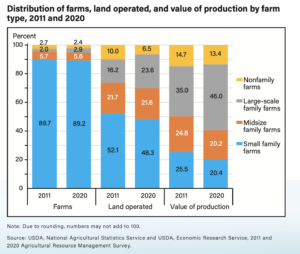
“Nonfamily farms accounted for the remaining 2 percent of farms and 13 percent of production,” the report said; adding that, “Examples of nonfamily farms include partnerships of unrelated partners, closely held nonfamily corporations, farms with a hired operator unrelated to the owners, and publicly held corporations.”
With respect to commodity production, ERS explained that, “The majority of the values of cotton (62 percent), dairy (73 percent), and high-value crops (57 percent) was produced on large-scale family farms in 2020. Small family farms produced the majority of hay (59 percent).”
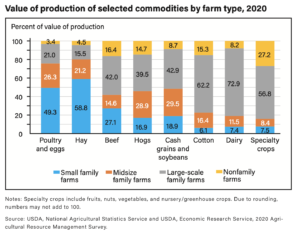
In a closer look at profitability, the report indicated that, “Large-scale family farms were most likely to have OPMs [operator profit margins] in the low-risk (green) zone (OPM>25 percent)—between 43 and 45 percent—and least likely to be in the red zone in 2020—between 26 and 30 percent. These farms are more likely to have positive on-farm income.”
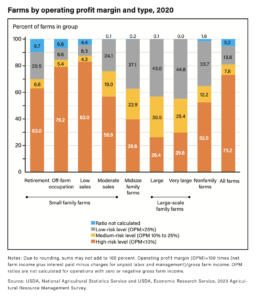
Last week’s update also pointed out that, “The distribution of farm operating expenses varies across commodity specializations but remains largely unchanged over the 10-year period from 2011 to 2020…A large share of total expenses on field crop farms went toward fertilizers and other chemicals (26 percent) in 2020, which was slightly less than the share spent in 2011 (27 percent).”
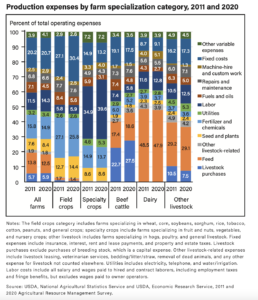
In a closer look at government payments, the ERS report indicated that, “Small family farms received 16 percent of all farm-level pandemic assistance from USDA and 22 percent of all other Government payments—excluding pandemic assistance and conservation program payments—which was consistent with the smaller production scale. Large-scale family farms received 52 percent of all farm-level pandemic assistance and 44 percent of all other payments.”
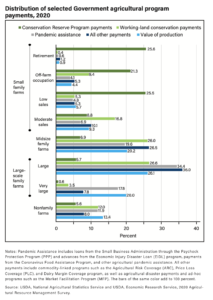
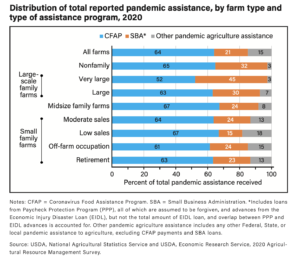
With respect to Federal crop insurance, ERS stated that, “Indemnities from Federal crop insurance were roughly proportional to acres of harvested cropland and concentrated among midsize and large-scale farms in 2020.”
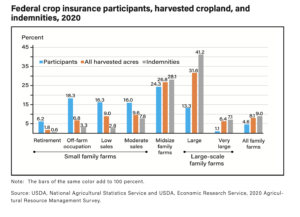
“Midsize and large-scale family farms together accounted for 65 percent of all program harvested acres and received 77 percent of indemnities from Federal crop insurance in 2020. These family farms were also the most likely to participate in Federal crop insurance.”





